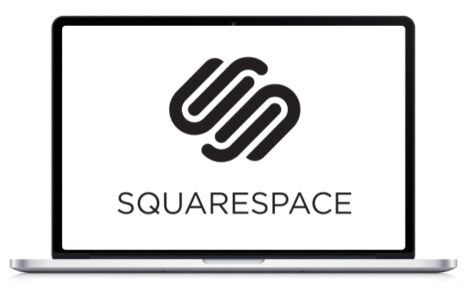Nowadays, business leaders are more data-driven than ever. With the power of advanced Business Intelligence tools like Cognos, leaders are able to obtain precise insights and deliver personalized experiences via applications and platforms. Cognos’ low-code ecosystem enables data leaders to easily manipulate data and create effective visualizations. Besides, the drag-and-drop tool support simplifies rapid reports and dashboard development.
However, implementing Cognos and building basic visualizations doesn’t guarantee that an organization will become data driven. Deploying robust data warehousing and management solutions and highlighting the importance of making data-driven decisions for all workers will help leaders standardize data-driven culture. Since it is a time-intensive and strategic initiative, seeking help from skilled IBM Cognos consultants is the right choice. These consultants help data leaders set up Enterprise Data Warehouses (EDWs) for processing huge data workloads and driving transformation.
Cognos Consulting – Team Structure for an EDW Implementation Project
Enterprise Data Warehouse creation and management is a solid ground for experts in a recognized Cognos consulting services provider. Even when an organization’s data is spread across different regions and servers, the consultants effectively pool critical information in a single repository and ensure constant access to it. This enables Chief Analytics Officers (CAOs) and Chief Data Officers (CDOs) to effortlessly analyze trends, foster meaningful insights, and strategize their professional activities consistently.
While partnering with Cognos consulting firms, enterprises get access to top-notch professionals for implementing EDW projects, such as:
- Project Manager – This dedicated manager is ultimately responsible for the EDW project’s success. They determine the scope of the project, and deliverables and organize the project plan, where timeframes, resourcing, and budget valuation are the key components. Once the plan is being put into action, the PM deals with resource coordination, project tracking, communication with in-house teams, and pipeline bottlenecks. In essence, manages all routine activities and project tasks.
- Business Analyst – This specialist understands business requirements set by the data leaders and makes sure the tech group is aware of them. The analysts also conduct documented interviews and assist data leaders in data mapping, data modeling, and other crucial activities.
- Data Modeler – The outcomes of a preliminary detailed data analysis enable Cognos Data Modelers to design the architecture of the data warehouse as a whole. The modelers design other architecture elements (including data storage, staging, models, and others) and document the scope. Data Modelers control the full-cycle process of the warehouse’s architecture creation and implementation.
- Warehouse Database Administrator – Cognos Database Administrator transfigures logical models into the table format, offers operational support for the database, and ensures data accessibility and integrity. Also, this specialist is accountable for building a data backup and recovery strategy.
- ETL Developer – They are responsible for the ideation, creation, and deployment of extraction, transformation, and loading pipelines.
- Quality Engineer – Their main objective is to ensure the proper functioning of the data warehouse solution and the precision of the data it contains. By prioritizing this, Cognos Quality Analysts create testing strategies, detect potential errors, resolve them, and execute numerous tests on the final solution.
Deploying an Enterprise Data Warehouse (EDW) within an infrastructure is a great way for organizations to fast-track digitization journey. The Data and AI Leadership Executive Survey 2024 pinpoints that data warehousing helps in alleviating 73% work burden of data architects. This statistic alone is enough to show the rising prominence of this initiative.
Building Enterprise Data Warehouse – Key Steps Followed by Cognos Consultants
1. Understanding Business Requirements and Objectives
One can’t successfully build any software solution unless they know the expected outcome. In the case of data warehouse creation, Cognos consultants analyze business requirements by considering many aspects – from the kind of data the warehouse will contain to the frequency of its utilization. To apprehend it, the consultants interview users and identify business goals, core processes, major problems the company encounters, KPIs it manages, types of data analysis executed by users, etc.
A crucial part of the analysis is the interaction with the business’s IT department. This will help consultants figure out the technical details of the company (like operational systems it utilizes, available tools to access and analyze information, insights that are usually generated, and so on).
2. Architecture Ideation and Tool Selection
Having all the analysis information at their fingertips, Cognos consultants adopt an architectural approach to build a data warehouse and select the optimal combination of Cognos tools to implement it.
Data warehouse development may include different patterns of internal architecture, the popular options are:
- One-tier Architecture – IBM Cognos Business Intelligence experts claim this as the simplest architecture mode for data warehouse creation. In it, the consultants just connect an enterprise’s data storage directly to the UI, allowing internal workers to make queries and gain an instant response. Sounds easy? Well, not really. Problems begin to emerge when the volume of data sources exceeds 100GB, impacting the query processing accuracy and speed considerably. That is why this architecture hardly suits small-scale enterprises working with minimal amounts of data and progressive queries.
- Two-tier Architecture – In this case, one more architectural layer is included as a database extension, existing between the UI and the warehouse itself. This layer consists of numerous data marts, each comprising only domain-specific data, thereby simplifying query handling. Such architecture offers greater data security since file access in the Cognos BI tool can be restricted to specific employees or teams.
The choice of the architecture and tools differ based on the current business environment, required strategic technological directions, capabilities of the in-house IT team, and data nature and volume.
3. Data Warehouse Designing
To design the UI of the data warehouse in Cognos, consultants apply various modeling techniques. For instance, star schema and normalized schema are key design patterns that Cognos experts use to organize the end-user’s data into entities (real-world objects) with logical connections between them and characteristics (attributes of these objects). Then, these logical models are changed into database structures (columns, tables, foreign key checks, etc.). Once such modeling operations are completed, the consultants define the source-to-target dataflow, feed the warehouse with aggregated data, and monitor the whole process narrowly.
At this phase, consultants also keep tabs on data access and usage policies. Through the metadata catalog, consultants define the warehouse component’s properties and establish business glossaries.
4. Implementation and Launch
The implementation stage itself consists of various procedures. To begin with, Cognos consultants configure and customize the quintessential elements (such as the Enterprise Data Warehouse platform’s transformation tools, security solutions, etc.). Secondly, ETL pipelines are assembled, and data security measures are programmed. Then, all these elements are integrated with the existing data infrastructure, to which data from other sources is embedded afterward.
Once these procedures are over, the consultants test the data warehouse’s performance and verify the legibility, exactness, and consistency of data. Moreover, they ensure internal users have access to the new data warehouse and maneuver it efficiently. The latter is accomplished via extensive training and meticulous documentation support.
5. Post-Launch Support and Maintenance
As mentioned before, reputable Cognos consultancy firms extend maintenance and support services to all their clients for any data-related projects. In the case of Enterprise Data Warehouse creation, support, and maintenance are a crucial part of the package. When the EDW is put into functioning, the consultants keep in touch with its handlers to assess its performance metrics, evaluate user satisfaction, and ensure the system’s sustainable growth.
Closing Thoughts
Selecting the right architecture, and data tools, onboarding a certain approach, and implementing the data warehouse using Cognos is not a task that can be entrusted to in-house professionals. Seasoned mavens of the Cognos platform have sufficient competence and experience to tackle such a project and deliver a feature-rich data warehouse. Overall, the data warehouse built by dedicated consultants will add value to businesses of any size and nature.




